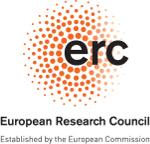Title goes here
Alejandro Benitez-Llambay, 12 September 2012
Abstract
This is a simple template for authors to write new MNRAS papers. The abstract should briefly describe the aims, methods, and main results of the paper. It should be a single paragraph not more than 250 words (200 words for Letters). No references should appear in the abstract.
Introduction
This is a simple template for authors to write new MNRAS papers. See for a more complex example, and for a full user guide.
All papers should start with an Introduction section, which sets the work in context, cites relevant earlier studies in the field by Fournier (1901), and describes the problem the authors aim to solve vanDijk (1902). Multiple citations can be joined in a simple way like (deLaguarde 1903, delaGuarde 1904).
Methods, Observations, Simulations etc.
Normally the next section describes the techniques the authors used. It is frequently split into subsections, such as Section~\ref{sec:maths} below.
Maths
Simple mathematics can be inserted into the flow of the text e.g. \(2\times3=6\) or \(v=220\) km s\(^{-1}\), but more complicated expressions should be entered as a equation:
\begin{equation} x=\frac{-b\pm\sqrt{b^2-4ac}}{2a}. \label{eq:quadratic} \end{equation}
Figures and tables
Figures and tables should be placed at logical positions in the text.
Figures are referred to as e.g. Fig. 1, and tables as e.g. Table 1.
Include a Figure using:
 |
|---|
| Figure 1. Add your caption here** |
Include a table using. Note that you can control the aligment of the fields with —, —:, :— or :—:.
| A [km s\(^{-1}\)] | B [erg s\(^{-1}\)] | C | D | E | F |
|---|---|---|---|---|---|
| 1 | 2 | 3 | 4 | 5 | 6 |
| 2 | 4 | 7 | 34 | 5 | 6 |
| 1 | 3 | 123 | 23 | 5 | 6 |
Conclusions
Adding content is easy.
References
You can add references linked to the ads, for example, using this syntax:
